|
This Japanese technique is written using two Chinese and one Japanese ideogram - with all three ideograms being routinely used in the Japanese written language - and two ideograms ('1' and '2') being used in the Chinese written language: 腰 - Japanese - Koshi (Chinese: yao1) = waist, hips and midsection 投 - Japanese - Na (Chinese: tou2) = throw, blend, redirect and reject げ - Japanese - Ge = down, low, depth and ground Interestingly, with regards the ideogram '腰' (Koshi) - both the Japanese and Chinese language dictionaries give an identical (and exact) physical location. Therefore, 'Koshi' represents the 'waist' (or the anatomical 'space' between the hips) situated toward the front of the body - whilst the back of the body corresponds 'Koshi' to the 'small of the back' or the 'lumbar' region. Although neither dictionary mentions the centre of gravity of the body - or the 'lower dantian' (both situated three-inches below the naval) it seems clear that such a 'special' area is implied. I think this assumption receives support as 'Koshi' is also used to refer to the 'kidney' area - perhaps slightly higher than the lumbar a 'cold' area significant within traditional Japanese and Chinese medicine. Although 腰 (yao1) is prevalent within Chinese martial arts (used to counter an opponent through penetrating their technique, blending with it and redirecting it) - 'Koshinage (腰投げ)' is a 'distinct' Japanese physical interpretation not found in China. When the Chinese government took Sō Dōshin (宗道臣) [1911-1980] to a Japanese Court in the early 1970s (an event covered in one of Donn F. Draeger's books on 'Modern Budo') - part of the evidence accepted by this Court that his style of 'Shorinji Kempo' ('Shaolin Gongfu') was NOT of Chinese origin - is that nearly all of its techniques include 'Koshinage' (the BBC chose to omit this Court verdict in its 1980 'Way of Warrior' series). Cooperation of this type is a Japanese cultural development - and is not found in China's traditional arts - even though the concept is present (and used in a different manner). However, I would note that the use of squat-kicks is found in Chinese arts and are used in exactly the same manner as this documentary suggests - although our Hakka style places a great deal on toughening the legs to take continuous impact (similar to Muay Thai fighters in Thailand) and keep effectively moving. The only Karate-Do style I have encountered that has squat-kicks is Goju Ryu.
0 Comments
Building upon my previous work, I am considering the theory that the various Karate-Do Styles originally possessed 'different' and ‘diverse’ terms for their techniques - as each evolved from its foundational gongfu Style. For instance, traditional Chinese gongfu does not possess the unity or conformity that defines modern (Okinawan) Karate-Do - an attribute which gives Karate-Do an inherent robustness and strength – achieved through the process of removing of diversity. On the other hand, even within Chinese gongfu Forms contained within the same Style - exactly the same movement often possesses a completely different name! This is often due to a) metaphysical interpretations (linked to TCM) and b) to material practicality. A lower block may be performed with an open hand or closed fist - use the edge, palm or back of the open hand - or the 'Hammer Fist' of closed hand. The contact surface might be the boney areas of the wrist, or the bones of the fore-arm - similar to the 'Iron Arm' training performed in deep Horse Stance with fore-arms and wrists robustly striking one another (this is a Hakka speciality, and we do this from childhood - generating tremendous power when an adult)! I remember performing this type of conditioning within the Goju Ryu Karate-Do Style - only in a higher (Sanchin) Stance. Experts tend to adjust their technique to become like 'water' - which envelops and controls any 'stone-like' techniques! The metaphysical reasons are far too in-depth to cover in a single article – but what follows is a basic summary. The 'jing' [精] (retained sexual energy) and 'qi' [氣] (breath, food, drink and moral thought) are circulated up the 'Governing Vessel' (督脈 - Du Mai) and down the 'Conception Vessel' (任脉 - Ren Mai) in a continuous microcosmic cycle (小周天 - Xiao Zhou Tian). What the Japanese people renamed the 'Hara' (はら) - or '払 (fan3) in the Chinese language (this ideogram has no immediate metaphysical meaning within the modern Chinese language) - is I believe a reworking of the well-known lower ‘丹田’ (Dan Tian) situated 1.5-3 inches below the navel. The three 'Dan Tian' locations (分 - Fen) are found in TCM as follows: 1) Upper Dan Tian (上丹田 - Shang Dan Tian) - situated in the centre of the forehead (the so-called 'Third-Eye' or 'Yin Tang' [印堂] point [穴 - Xue]) situated on the ‘Governing Vessel’. This is where '神' (Shen) - or 'empty' and 'all-embracing' consciousness is first formed prior to 'expanding' through the body (uniting the three 'Dan Tian') and penetrating the physical environment. 2) Middle Dan Tian (中丹田 - Zhong Dan Tian) - situated around the Solar Plexus (the 'Tan Zhong' [膻中] point) on the ‘Conception Vessel’. 3) Lower Dan Tian (下丹田 - Xia Dan Tian) - situated 15 - 3 inches below the navel - depending upon medical source (the 'Guan Yuan' [关元] point) on the ‘Conception Vessel’. These three pressure-points all exist upon a unified line of inner energy flow that demarks the ‘Governing Vessel’ and the 'Conception Vessel' situated on the front of body – extending deep into the tissue of the body reaching to the back of the spinal bone. This three-dimensional TCM can be observed at work with the 'Upper Dan Tian' (Governing Vessel) - which is comprised of a three-way link between the exact inner-centre of the brain-mass (泥丸宫 - Ni Wan Gong) and the exact centre-point situated at the top of the skull-bone - the so-called 'Bai Hui (百会) point. All genuine (traditional) Chinese gongfu is comprised of TCM thinking, methodology and spirituality. Killing, maiming (hurting the opponent's mind and body - either temporarily or permanently) or stopping the opponent without hurting their mind or body - are the physical objectives. As for the spiritual side (which I think is also embedded in the 'Gedan Bara-I' - 'Gedan Hara-I') - this is a complex issue. Gee reminded me that one form of the lower block we practice in our Hakka Family Style is performed on each side of the body - and does not cross the front of the torso at all (and therefore does not traverse the Lower Dan Tian point – or ‘Hara’ in the Japanese language). The 'Governing Vessel' and ‘Conception Vessel’ ‘connect’ between the roof of the mouth (just behind the front upper-teeth) and is connected to the 'Conception Vessel' via the top of the tongue. Whereas the Upper Dan Tian appears within, upon and around the ‘Governing Vessel’ - the Middle and Lower Dan Tian appear within, upon and around the 'Conception Vessel'. However, the following analysis is a correct correlation of Karate-Do ‘Blocks’ and ‘Dan Tian’ pressure-points: Jo-Dan (Upper Level) Uke (Block) = Upper Dan Tian Chu-Dan (Middle Level) Uke (Block) = Middle Dan Tian Ge-Dan (Lower Level) Hara-I (Block) = Lower Dan Tian This suggests that the Upper Block (when performed to the immediate front of the body) travels through the Upper Dan Tian. The Middle Block (when performed to the immediate front of the body) travels through the Middle Dan Tian, and the Lower Block (when performed to the immediate front of the body) travels through the Lower Dan Tian. I have accessed a Japanese language page regarding the 'Dan Tian' and this confirms the link between the Lower Dan Tian and the 'Hara'. The Chinese name for the Lower Dan Tian is '关元' (Guan Yuan) which is rendered into the Japanese language as '関元' (Seki Gen). This is also referred to as 'はら' (Hara) supposedly due to the influence of Zen Buddhist practice - but as a Chinese Ch'an Buddhist myself, I have no idea why this should historically be the case. However, by building upon my earlier work regarding ‘Ge-Dan Bara-I’ (下段払い)’ - if we follow this line of reasoning, the original (or 'early') Karate-Do Blocks could have been called something like this: Jo-Dan Gindo-I (上段 銀堂 い) = Upper Level 'Gindo' (Upper Dan Tian) Forceful Execute! Chu-Dan Nichu-I (中段 丹中 い) = Middle Level 'Nichu' (Middle Dan Tian) Forceful Execute! Ge-Dan Bara-I’ (下段払い) which should read ‘Ge-Dan Hara-I’ = Lower Block 'Hara' (Lower Dan Tian) Forceful Execute! To arrive at the above speculation - I have 'reversed engineered' the structure of the Lower Block (conventionally and incorrectly rendered into English as ‘Ge-Dan Bara-I’ - [下段払い] - when it should read ‘Ge-Dan Hara-I') into the Middle and Upper versions. I have used Japanese language transliterations of the original TCM designations regarding the Dan Tian points even though I do not know the 'slang' terms for these Japanese words. I say this as I am told that 'Hara' is a slang term for the Chinese TCM language term '关元' (Guan Yuan) [which refers to the Lower Dan Tian point] - which translates as to 'Seal the Source' or 'Stop the Leakage to Strengthen the Foundation'. Traditionally, the Japanese people developed the ritual of 'cutting-open' (Hara-Kiri) this anatomical area as a means of 'releasing' what they thought to be their 'life spirit'. I know of no Chinese cultural equivalent to this practice. The 'Blocking' techniques of Karate-Do, however, serve the exact 'opposite' of this destructive practice – and this is achieved by the Karate-Do Blocks 'protecting' these three energy centres - which are considered vital for the evolution of life!
Lu Zijian comes from a famous martial arts family situated in the Yichang area of Hubei province - a family which contains many long living members: Grandfather - Lu Zhengde [吕政德] (1840-1913) - 73-years-old Grandmother - Wu Meihua [吴梅花] (1842-1945) - 103-years-old Sister - Lu Zimei [吕紫梅] (1888-Still Alive) - currently 125-years-old! Brother-in-Law - Li Fengfang [李丰方] (1878-2001) - 123-years-old During his long life, Lu Zijian mastered all aspects of the 'Wudang' (武当) tradition (training for three generations - or sixty-years - under various Masters) - specialising in 'Longfist' (長拳 - Chang Quan) - and eventually inheriting the Wudang Bagua Zhang (八卦掌) lineage. In 1945, a US Military General took exception to Lu Zijian's good reputation (as he had killed both Japanese and Nationalist thugs over the years - many of the latter working for the US)! The General sent his personal Bodyguard - 'Tom Newham' - to teach Lu Zijian a lesson - but things did not go according to plan. The Americans had been making anti-Chinese statements and this fight took place in front of Chiang Kai-shek's mansion (situated at the foot of Huangshan Mountain) on the South Bank of Chongqing. Lu Zijian beat Tom Newham to death with a single palm strike as taught in the Baguazhang System. Chiang Kai-shek was furious about this (for political reasons) and announced that Lu Zijian was dismissed as his Bodyguard! Previously, Lu Zijian had been in trouble in 1929 when he openly opposed Chiang Kai-Shek's plan to 'ban' TCM and introduce a US-controlled medical insurance system in China!
Dear Tony Thank you for your interesting email regarding the relatively 'open' stance as found throughout the various lineages of Fujian White Crane Fist when practicing the 'San Zhan' (三戦) or 'Three Battles' Form - as compared with the 'closed' stance work (and obvious groin protection) found within the 'Sanchin' Kata of the Goju Ryu Karate-Do Style! Yes - I have noticed this. I was talking to a student about this. It reminded me of the stance used for skiing. As if 'gripping' or 'stabilising' on a slippery surface. Sometimes, the old Masters (such as Master Chan) would talk about stepping in, through or onto congealed blood - which is slippery. He fought, wounded and killed invading Japanese soldiers during WWII (1941-1945) as part of the Hakka Resistance operating throughout the New Territories (a People's Militia had developed - supplied from the Mainland). His father (Chan Yun-Fat) was killed fighting in 1944 leading an attack on an Imperial Japanese Army position - armed only with traditional gongfu weapons. This was a diversionary attack whilst those armed with the limited number of rifles and ammunition attacked the main target. His wife's mother was gang-raped by Japanese soldiers, skinned, hung-up by her hair and set fire to. Por Por (Mrs Chan) used to tell us stories for years about those terrible times - until her passing in 2011 (years later, a Detective contacted Mrs Chan and said one of her brothers had survived a Japanese village massacre and had been taken to Australia by foreigners - she got to meet him again one more time in his now native Australia a year before he passed away. I spoke to him on the telephone. He was around five years old at the time of him going 'missing' - with his small body being hidden under the bodies of the adults killed around him). We practice falling to the ground forward, backwards and to the sides in our Hakka Longfist Family lineage - and using Ground Fighting (with a groin guard and a head guard). I suspect that other aspects of the Fujian Style in question also teach a groin guard in an accumulative sense - as is usual in traditional gongfu. Goju Ryu is highly rationalised and modernised (a process of sheer genius) - which is a good thing - but traditional gongfu is often sprawling, illogical and difficult to fathom! Thanks PS: Wong Tai Sin is our 'Daoist' family God - as Master Chan Tin Sang (1924-1923) was a TCM Doctor (taught in the old way). It is virtually impossible to acquire statues of this 'healing' God as it is very carefully guarded by the Temple Authorities in the New Territories! We have a photograph on our family shrine - but my ex-wife currently looks after the family Wong Tai Sin statue (which was passed into my keeping by Mrs Chan upon her passing). Indeed, my ex-wife can be seen on the above-linked BBC programme - 'Escape to the Country' with our family statue of Wong Tai Sin (黃初平) shown at 5:39:
Source: China Taiwan Network China Taiwan Net - August 30th, 2016 - Shiyan News (Reporter Zhao Miaoqing [赵苗青]): On the afternoon of August 29th, 2016 - organized by the Taiwan Affairs Office of Hubei Province – we participated in the ‘Use Your Wisdom-Eye to Understand the Foundation’ intuitive, which formed part of the ‘10th Cross-Strait Media Jingchu Travel Collective Activities’! This time the focus was on ‘Wudang Mountain’ (武当山 - Wu Dang Shan). The members of the team visited the following places of interest amongst many others: a) Wudang Mountain Geological Museum (武当山地质博物馆) b) Wudang Mountain Special Zone Planning Hall (武当山特区规划馆) c) Wudang Mountain Museum (武当山博物馆) d) Wudang Mountain Museum (武当山博物馆) The Wudang Mountain is a Daoist area of immense beauty designed to relax all inner and outer tension whilst generating unity, harmony, balance, peace and perfection! By being present in this place, the mind, body and spirit experience a ‘purification’ process (premised upon breathing deeply and fully the pure air), whilst the Daoist practitioners and Masters see right ‘through’ each and every person who happens to walk (or manifest) within their vision (or sensory sphere)! Of course, many people who visit have disabilities – just as some of the Daoist priests and Masters do! Everyone (and every living creature) is welcome and all that is felt is an uplifting ‘compassion’ and a ‘healing’ love for life and existence! Many visitors report a ‘new’ agility and ‘renewal’ of mind and body with the spirit (consciousness) being expansive and all-embracing! The area (and experience) is grand and majestic! The ‘qi’ (气) energy is truly ‘great’ and ‘uplifting’! An interesting point the Daoist Masters and Daoist priests wanted to emphasise is that ‘everyone’ is welcome to participate in the ‘humanistic’ quality of Wudang Mountain – the Daoism of which does not discriminate in anyway and which accepts ALL beings without question or condition! Inside the Wudang Mountains Special Administrative Region the sand-drawing table attracted media attention from both sides of the Straits! Everyone was amazed at the grandeur of its scale! On the last stop of the day, the team visited Jade Emptiness Temple - known as the ‘Forbidden City’ of the South! The Jade Emptiness Temple is located at the Northern foot of Wudang Mountain, within a basin area of 5 square kilometres. There are four imperial stele pavilions situated inside and outside the Temple – perfectly positioned so that each faces the other in a majestic manner (despite their differences in size)! In an area directly in front of the Jade Emptiness Temple, Master Yuan Xiugang (袁修钢) - the 15th Generations Lineage Descendent of the Wudang San Feng (三丰) School of ‘Internal’ (內 - Nei) Martial Arts – led a group of disciples through an impressive display of bodily movements of the arms, legs and torso! As a Daoist Priest, he responsible for the preservation and transmission of these ancient Daoist martial arts which can be spectacular to encounter! "The martial arts practiced on both sides of the strait share the same common cultural origin. There are many Taiwanese compatriots who come to Wudang Mountain to learn martial arts every year - but there are not many Taiwanese students who commit themselves fulltime to learning Wudang martial arts over the longterm and place themselves in a position to inherit the Wudang martial arts lineages - as this would be something we would definitely encourage." Explained Master Yuan Xiugang in a joint interview with media from both sides of the strait. When asked about the exchange of martial arts between the two sides of the Taiwan Strait, Daoist Master Yuan Xiugang said: ‘Since 1994, cross-strait martial arts exchanges have become more frequent. In the past, Taiwanese people mostly conducted Daoist cultural exchanges in the form of ‘incense’ groups (paying respect at various holy places). After more than 20 years of exchanges, however, the cross-strait martial arts have gained a deeper understanding of each other.’ He hopes to strengthen and deepen the cultural exchanges between young people on both sides of the straits using the Wudang ‘Internal’ martial arts tradition as the vehicle and hopes that more and more young people will systematically learn Wudang martial arts and pass on the complete (Internal) lineages in their hometowns and living locations. According to reports, Wudang martial arts conform to the operating state of the inner body and the reality of the ‘natural’ outer world. Therefore, when practicing these ‘internal’ martial arts, the disciples learn to ‘drop’ or ‘sink’ (沉 - Chen) their bodyweight into (and through) the ground they are standing upon – always being physically (and psychologically) firm and stable (like a ‘Pine Tree’) - when in a state of movement or stillness! The outside of the body becomes noticeably pliable and ‘soft’ (柔 - Rou) whilst the inside of the body becomes ‘toughened’ or ‘hardened’ (刚 - Gang) in the sense that if impressed or impacted in any way from the outside – the incoming force is absorbed and dissipated harmlessly away from the inner organs and lacks the piercing power to damage the joints or bones, etc. Wudang martial arts, however, are about the developmental health of the mind, body and spirit, protecting the natural environment and the REMOVAL of all conflict in the mind, body and environment, and between individuals, species and different systems of life choices, creativity and artistic expressions! With practice, Wudang martial arts practitioners learn to move about as if they are floating like clouds or flowing upon water! These abilities are considered unique within Chinese martial arts! This is why in 2006, Wudang martial arts were selected as part of the first batch of intangible cultural heritage arts considered truly representative of China’s historical genius and creativity! This process led the collection and categorisation of all such Daoist activities that comprise the ‘Wudang Internal Family Fist Law’ (武当内家拳法 - Wu Dang Nei Jia Quan Fa)! There are around 30 different styles being taught and practiced on Wudang Mountain which include ‘Taijiquan’ (太極拳) and ‘Taiyi Five Phases Fist’ (太乙五行拳 - Tai Yi Wu Xing Quan)! There are also 9 types of ‘Qigong’ (气功) which have attracted a substantial amount of attention from home and abroad! Chinese Language Source: 问道武当 两岸媒体玉虚宫寻武术精髓(图)
2016年08月30日 09:30:00 来源:中国台湾网 中国台湾网8月30日十堰讯(记者 赵苗青) 8月29日下午,由湖北省台湾事务办公室举办的“借你慧眼看基地—--第十届海峡两岸媒体荆楚行”采风活动,聚焦武当山海峡两岸交流基地。 采风团成员先后参观了武当山地质博物馆、武当山特区规划馆、武当山博物馆、玉虚宫等景点,亲身感受武当山的秀美灵动、宏大气势雄伟,领略武当山的自然之美、人文之美。武当山特区规划馆内的规划沙盘图吸引两岸媒体人驻足观赏,大家纷纷惊叹于其规模的宏伟壮观。 当日最后一站,采风团一行参观了素有南方“故宫”之称的玉虚宫。玉虚宫位于武当山北麓,坐落在5平方公里的盆地之上,宫内外有四座御碑亭,巍然对峙,亭内置石雕赑屃驮御碑,大小不一。在玉虚宫前,武当山三丰派第十五代武术传人袁修钢道长带领着其弟子整齐划一地挥舞着拳脚,场面颇为壮观。“两岸武术同宗同源,每年来武当山学习武当武术的台湾同胞有很多,但是专业学习武当武术能够系统的传承武当武术的台湾学员不多。”袁修钢道长接受两岸媒体的联合采访时如此表示。 被问及两岸的武术交流情况时,袁修钢道长表示:从94年起两岸的武术交流开始比较频繁,以前的时候台湾民众多是以进香团的形式进行道教文化交流。两岸武术经过20多年的交流互相之间有了更加深刻的了解。他希望加强两岸青少年在武术方面的交流,希望能有越来越多的年轻人系统的学习武当武术然后将它完整的传承下去。 据悉,武当武术以其松沉自然、外柔内刚,行功走架如浮云流水的独特风格,在中华武林中独树一帜。2006年武当武术入选中国首批非物质文化遗产,挖掘整理出的武当内家拳法、武当太乙五行拳等有30多种,气功9种,引起海内外武术爱好者广泛关注。(完) QI - Journal of Traditional Eastern Health & Fitness: Published Article Contract (26.1.2015)11/3/2021 Everything that needs to be said can be seen in this photograph. Those who are suitably 'aware' and who have developed genuine self-respect - will treat others with respect and understand the true 'essence' of Hakka Gongfu! We train in old warring arts that would not work on the modern battlefield simply because they are out of date. Great martial skill could be wiped-out in a second even by a stray bullet! We train to uproot greed, hatred and delusion, so that warfare does not arise a) in the mind, and b) in the environment. This means we train to create, establish and maintain genuine peace in the world! Chinese culture evolved out of the requirement to 'fight' on the one hand (in 'self-defence') and develop the personality to the highest psychological, emotional and spiritual level possible. This is why Confucianism and Daoism include warriorhood within spirituality. Technically speaking, Buddha advises that ALL violence be given-up but the reality of the matter is that if certain groups of Buddhist monks and nuns had not 'defended' their temples from external attack - their temples (and very probably 'Buddhism' as a whole) would have been wiped-out in China! This is not to say that violence is 'right' or 'preferred' - but rather an acknowledge that Chinese society (and most societies in the world) need to evolve to a higher level of reality so that violence can nolonger exist or flourish!
The ‘external’ component represented by the numerous ‘gongfu’ styles extant in China – perfects the ‘leverage’ of the joints on the horizontal plane. As this is generated by contracting muscles (which operate through the ‘awareness’ of the positioning of the bones and joints in relation to one another), very high levels of physical fitness and psychological conditioning must be pursued and mastered. This also involves the understanding of ‘torque’ or ‘deliberately’ employed muscular tensions to generate and increase impact. Bodyweight is also used across the horizontal plane – joint, bone, muscle bodyweight and psychological focus build ‘external’ power and erupt this force into a relatively small area of contact through the contacting limb and/or body-part. This type of power is quite often ‘shocking’ to encounter and difficult to recover from once a clean blow has been landed to a vulnerable part of the body. This skill can take five, ten or more years to perfect through traditional Chinese martial arts training (which builds a practitioner’s mind and body from the ground upwards – like the construction of a Book of Change hexagram). The most efficient martial arts style that I have seen that can convey this ability to a new student (with little prior experience) in the modern world – is that of the Shukokai Karate-Do style as formulated by O-Sensei Shigeru Kimura (1941-1995). Integrated or ‘mixed’ power is a rarefied and highly refined skill of the highest martial order! A Master of ‘integrated’ power possesses the ability to continuously switch between power-generating systems (as in ‘external’ or ‘internal’), or apply only an ‘integrated’ approach. Furthermore, within the few seconds of a complicated fight – a fighter might have to switch rapidly from one power-expression to another because this is exactly what the situation calls for. The opponent could be highly skilled and a diverse approach necessary to ‘unlock’ their defensive patterns. Being ‘trapped’ in a restricted space might prevent certain techniques (and types of power generation) from being deployed – so the most appropriate mode should be selected. Where horizontal space is missing in the environment – then ‘vertical’ power can and should be used (with the orientation of power-generation adjusted to meet circumstances). Of course, the ‘iron vest’ ability to use the ‘aligned’ bones to absorb, reject or deflect any incoming attack is always in operation with the intention of ‘damaging’ the opponent’s attacking limb through using its own power and ‘deflecting’ it back into the structures of the attacking limb. This coincides with the maintaining of the perfect ‘rooted’ footwork. External Power = 外功 (Wai Gong) Internal Power = 內功 (Nei Gong) Integrated Power = 雜功 (Za Gong) The ‘neigong’ (or ‘neidan’) component is a vast subject that is very complex and directly linked to Daoist practice. This requires a qualified Master to lead the way. However, I have relayed above the basic requirements for ‘power production’ in our Hakka Family Style of Traditional Chinese Martial Arts.
The mastery of physical technique is an issue of training that should be achieved as soon as possible – even if the process takes a long amount of time in reality. This is irrelevant to the ongoing ‘inner process’ which continues continuously and without end regardless of physical circumstance, (i.e., standing, sitting, lying, walking or sleeping, etc). The mastery of physical fighting is the ‘external’ element of combat training – whilst the ‘inner’ processes far transcend the limitations of human conflict. Individuals can master ‘external’ combat without ever recognising the need or purpose of ‘inner’ training’. Furthermore, it is also possible to participate within ‘inner’ training with no experience in ‘external’ combat. However, within genuine ‘spiritual’ Chinese martial arts – the student has to traverse the terrain of ‘external’ combat BEFORE being allowed access to the path of genuine ‘inner’ training. Many who develop a skill at ‘external’ fighting with no inner training, usually exhibit an increasing and strengthening of the egotistical mind-set and the tendencies to be one-dimensionally ‘selfish’, ‘aggressive’ and highly ‘ignorant’ in manifestation. As such a person becomes ‘older’ - their physical skills diminish and finally disappear – leaving them as a bitter person with no martial ability. In fact, getting older is an important aspect of ‘inner’ training, as there are processes of internal mastery that are entirely reliant upon a profound transformation of the body chemistry and frequency of psychological patterning. Inner mastery can happen in a relatively younger person, but only within special circumstances, and only then if such a person retains a humble and accommodating attitude toward the further process of ‘maturing’ and ‘deepening’ of understanding as one’s age increases. Without this inner mastery – and older fighter will always be beaten by a younger fighter – but with inner mastery, the younger (less experienced) fighter will always be defeated. Spiritual mastery defeats an opponent on the spiritual, emotional, psychological and physical level – and it does so BEFORE any movement is even made. Without spiritual mastery – two fighters physically ‘clash’ and entangle their arms and legs in a chaotic manner with the ‘winner’ being that who prevails through an arbitrary set of rules. Onces the movement of the arms and legs are mastered; the emphasis forever moves inward and away from the physical body. This is a preparation for the (natural) dying process experienced at the end of life. This is how the martial arts is a vehicle for ‘life’ and ‘death’ which has nothing to do with the rather banal activity of physical combat.
ORIGINAL CHINESE LANGUAGE ARTICLE BY: QIANFENG DAOIST MASTER ZHAO MING WANG (赵明旺) (TRANSLATED BY ADRIAN CHAN-WYLES PHD) A few days ago, a venerable 70-year old man came to visit me in Beijing (at the Qianfeng Hermitage) from his hometown of Weihai in Shandong province! His name is ‘Jiang Daochang’ (姜道长) and he is a Disciple in the ‘Wudang’ (武当), ‘Sanfeng’ (三丰) School of internal martial arts practice and mastery! Indeed, Jiang Daochang has dedicated his life to the pursuance of Daoist gongfu (功夫)!
In his search for genuine Daoist self-cultivation knowledge and technique, he has travelled far and wide over many mountains and across numerous rivers! He is a Master of the ‘Taiji’ (太极) ‘Long-Sword’ (剑 - Jian) ‘Law’ (法 - Fa)! Eventually, he has settled in the ‘Wudang Sanfeng School’. However, he has also been aware of the Qianfeng Pre-Natal School and has attended a local study group for many years. It has been his positive experience with this group that led to him taking the decision to travel to Beijing and visit the Headquarters of the Qianfeng School. He is a straightforward person who understands that usually a student must study with a Master for at least three-years (usually after three years of visiting other Masters) before being accepted as a ‘Disciple’ - but this situation is a little different due to Jiang Daochang already training in the Qianfeng School and the fact he is a Taiji Sword Master of many years standing! As is his right as an enquiring student – he requested that I ‘prove’ the efficacy of our School. I first explained the ‘Essential Life Mind-Body' (性命双修 - Xing Ming Shuang Xiu) self-cultivation method as preserved within the Qianfeng School. I then assessed the health of his mind and body – and immediately ‘opened’ ALL of his energy channels throughout his body. As the transformation was ‘immediate’ - Jiang Daochang stated ‘This is the genuine Daoist self-cultivation! Without this method, the essential nature (精 - Jing) cannot transform vital force (炁 - Qi) in the mind and body!’ After experiencing this – Jiang Daochang immediately requested ‘Discipleship’ and he was formally accepted into the Qianfeng School! Jiang Daochang is very concerned for the health of those who have practiced Taiji martial arts all their lives but who have also reached middle-age. When this stage of life is reached, it is important to replenish the ‘jing’ and ‘qi’ (精炁) so as to nourish the bones and inner organs. This is the same advice for ‘internal’ or ‘external’ martial arts practice! These activities consume a lot of ‘Jing’ (精 ) and ‘qi’ (气) - and this foundational store of energy needs to be replaced. This is a primary issue for athletes and people who like to keep-fit. Of course, this is also the same issue for everybody else – but at varying levels of use and replenishment. Many just burn themselves-out wasting their internal energy on frivolous pursuits! It is the ‘Essential Life Mind-Body' self-cultivation technique that can easily remedy this situation! Qianfeng Pre-Natal School Qianfeng Hermitage: Zhao Ming Wang ©opyright: Adrian Chan-Wyles (ShiDaDao) 2021. Original Chinese Language Source Article: http://blog.sina.com.cn/s/blog_64e533c90102yssx.html 修道先悟道 前几天从山东威海来了一位老者,七十多岁武当三丰派弟子姜道长来到北京千峰草堂。 姜道长一生为了追求道家功夫,先后拜访不少名山大川,对道家太极剑法为一生追求,最后拜入武当山三丰派门下。 近年来同时对千峰先天派很早就有了解,经过在千峰先天派群里了解,来到千峰草堂,姜道长是一位率真之人,多年习武造就其真性情,寒暄过后直言按道家规矩,徒访师三年师访徒三年,今天真心求道但是要看师父有真否? 交流了一些千峰先天派性命双修功夫后,为姜道长展示千峰先天派传承(开关展窍)打开经络,经过打开经络姜道长言道,此为真正道家秘法,无有此法无法改变自身精炁运化,随后真心正式拜入千峰先天派,成为千峰入门弟子。 姜道长对如今修道练武以及达到中老年人太极者,达到老年要增补体内精炁,不论是武术还是太极,以及大量消耗精气健身运动者,都需要道家性命双修功夫来增补体内精炁。 千峰先天派,千峰草堂 |
AuthorShifu Adrian Chan-Wyles (b. 1967) - Lineage (Generational) Inheritor of the Ch'an Dao Hakka Gongfu System. |
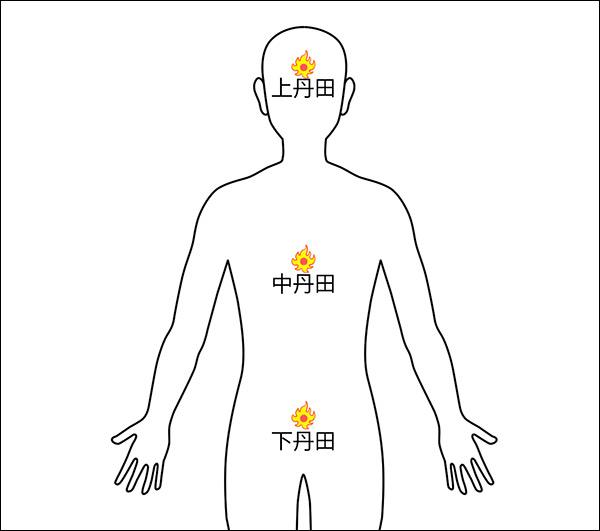
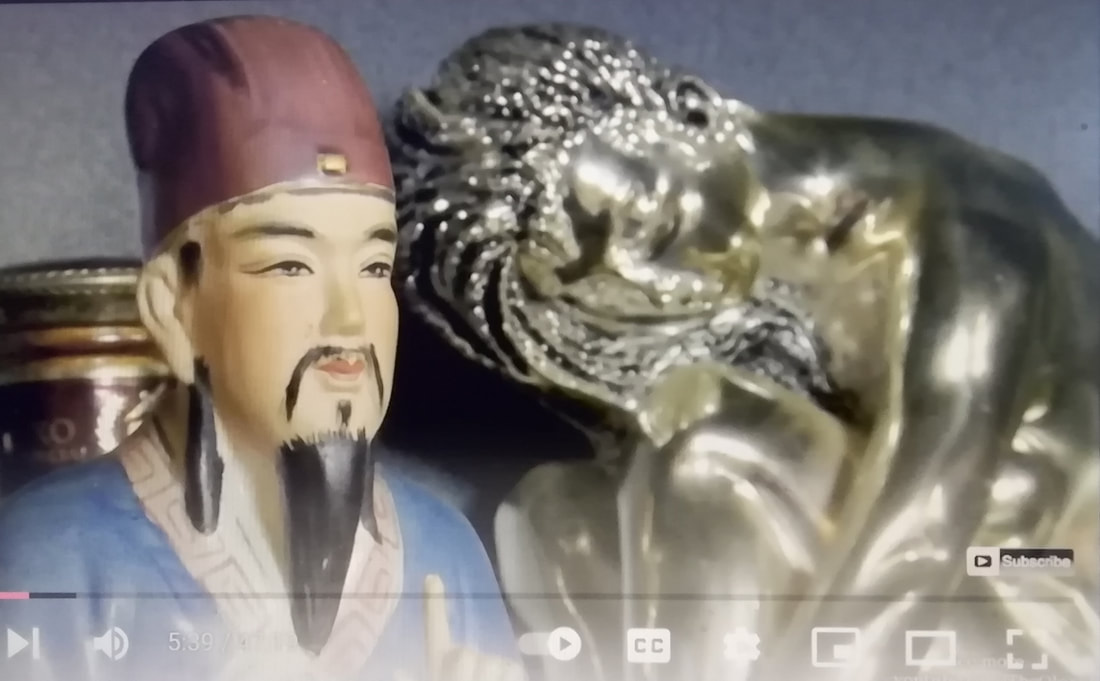
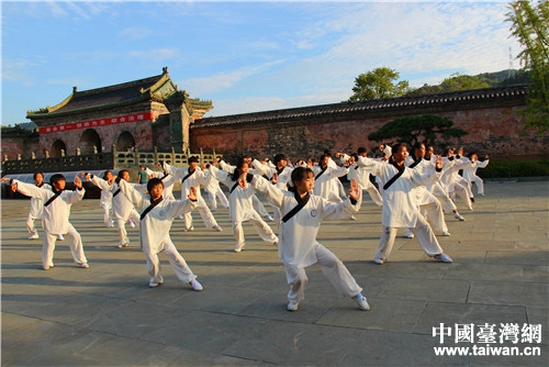
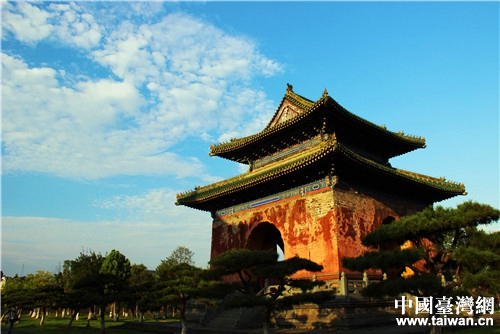
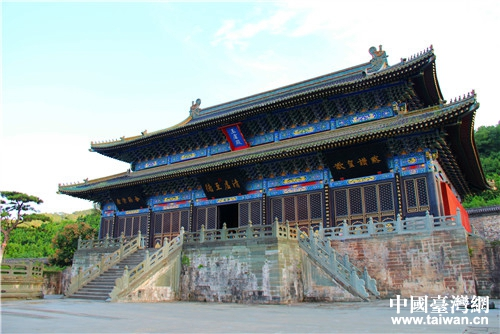
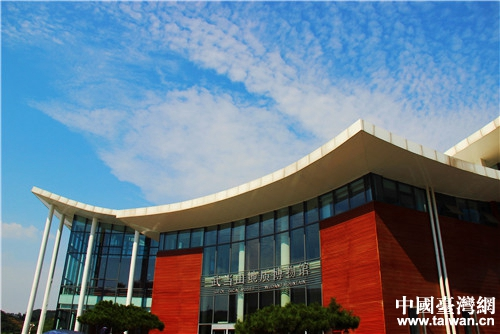
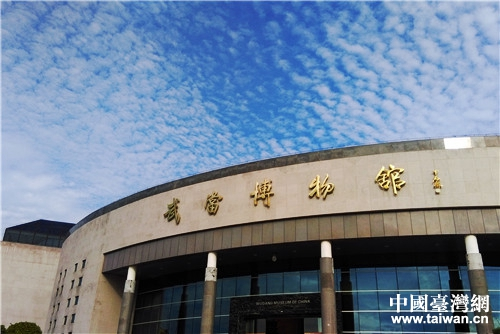
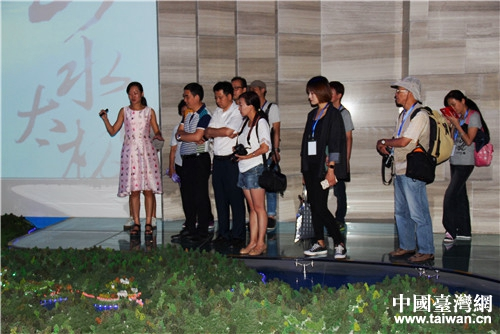
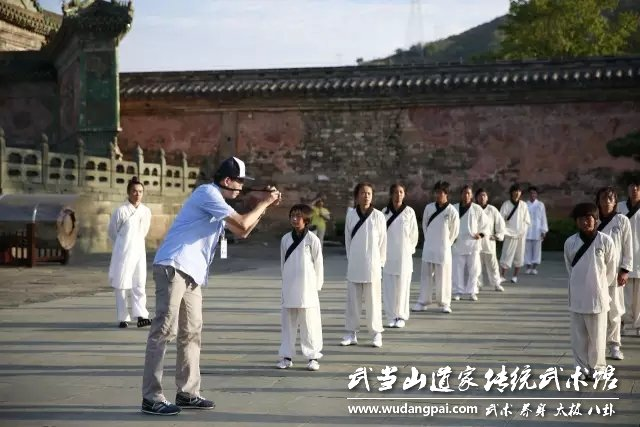
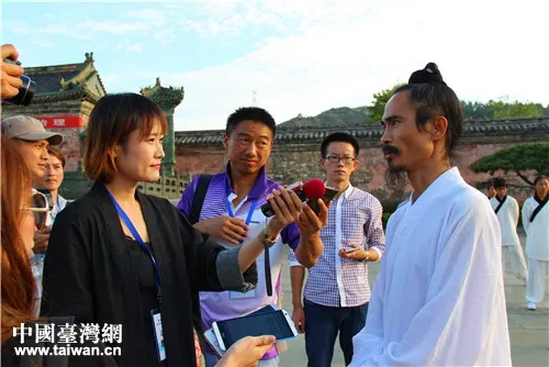
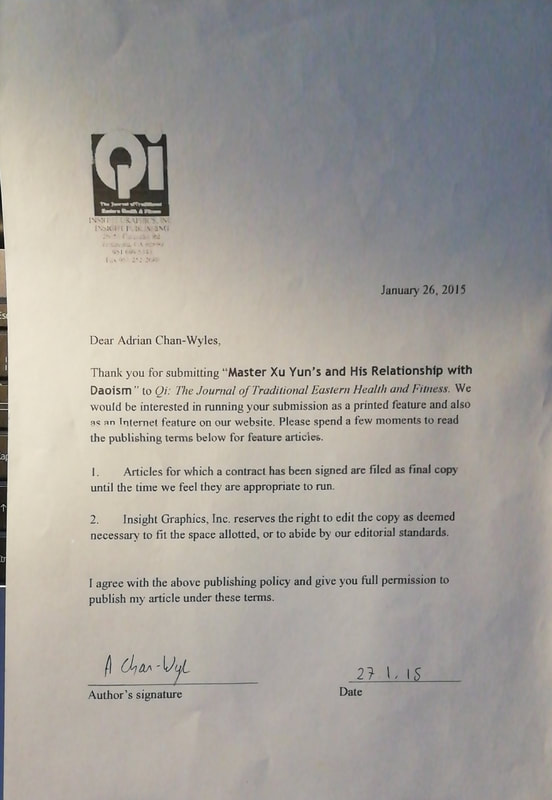
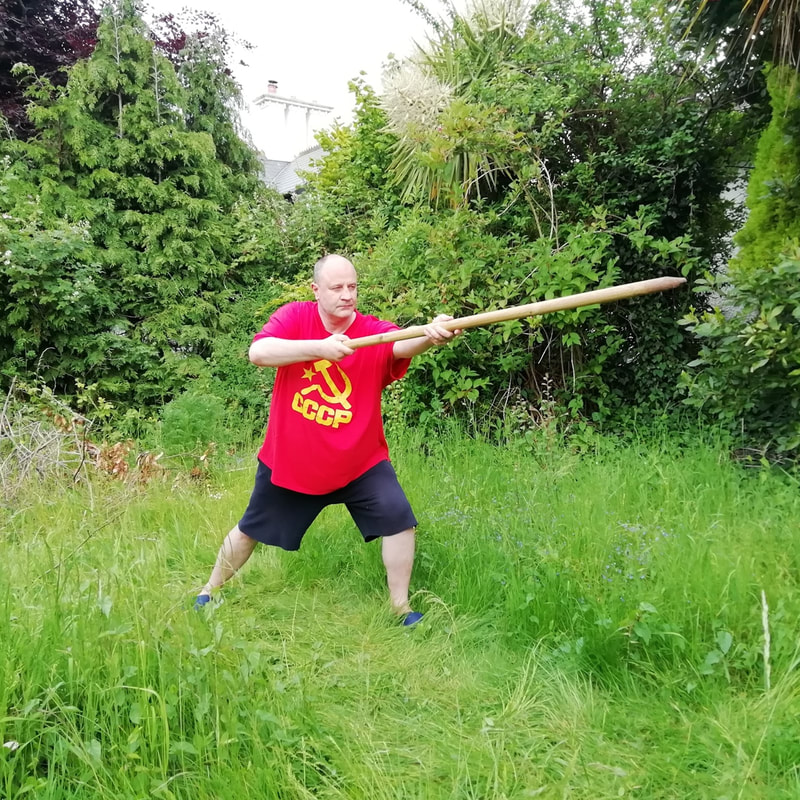
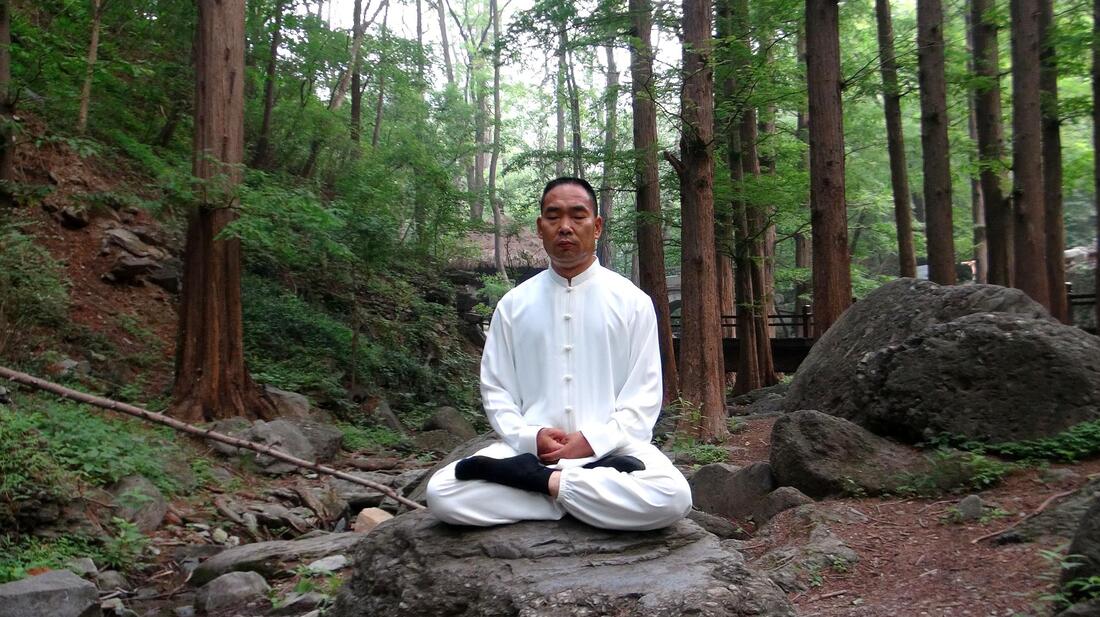
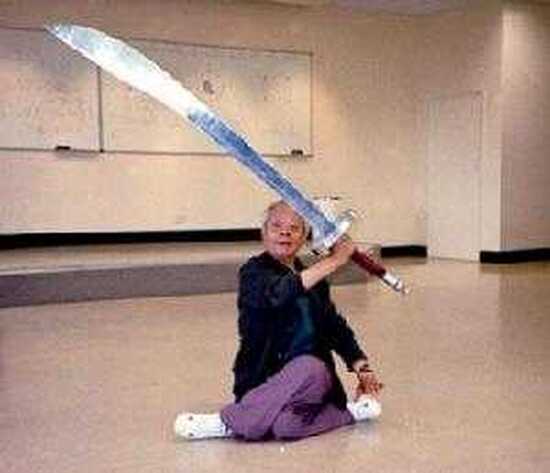
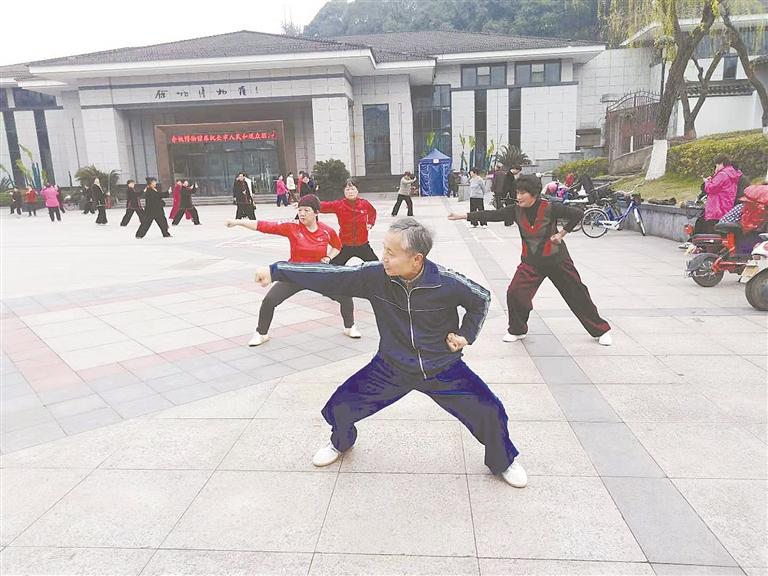
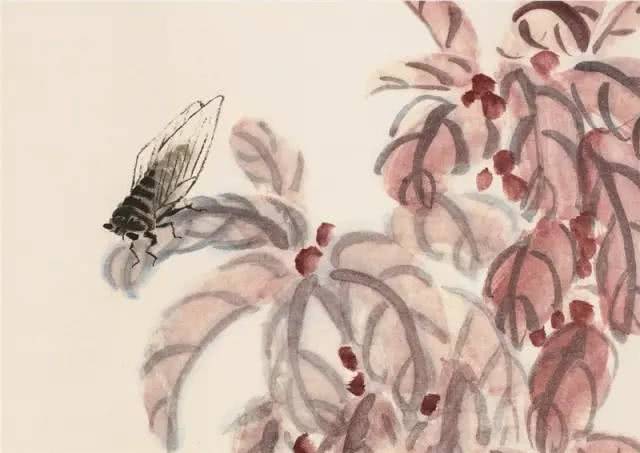
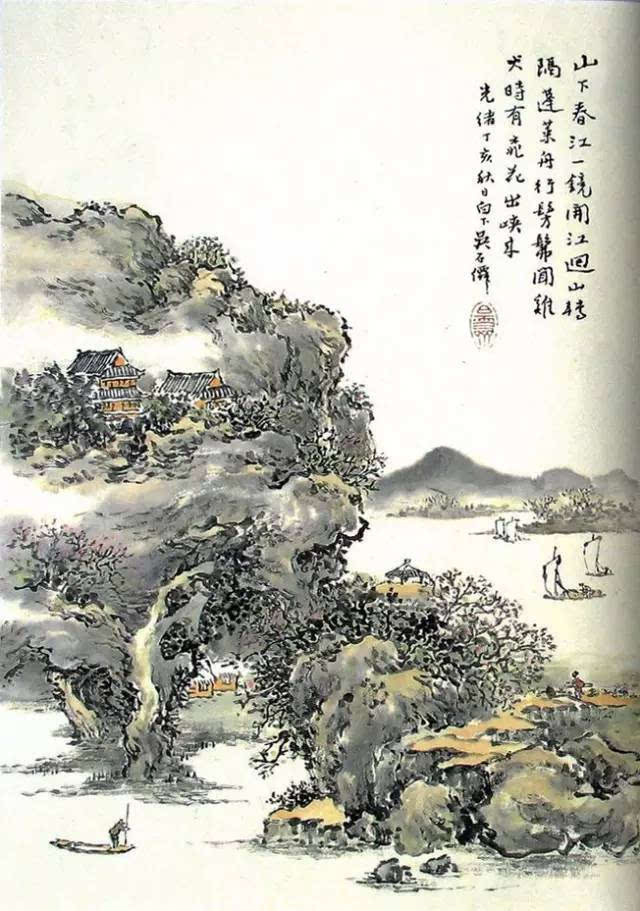
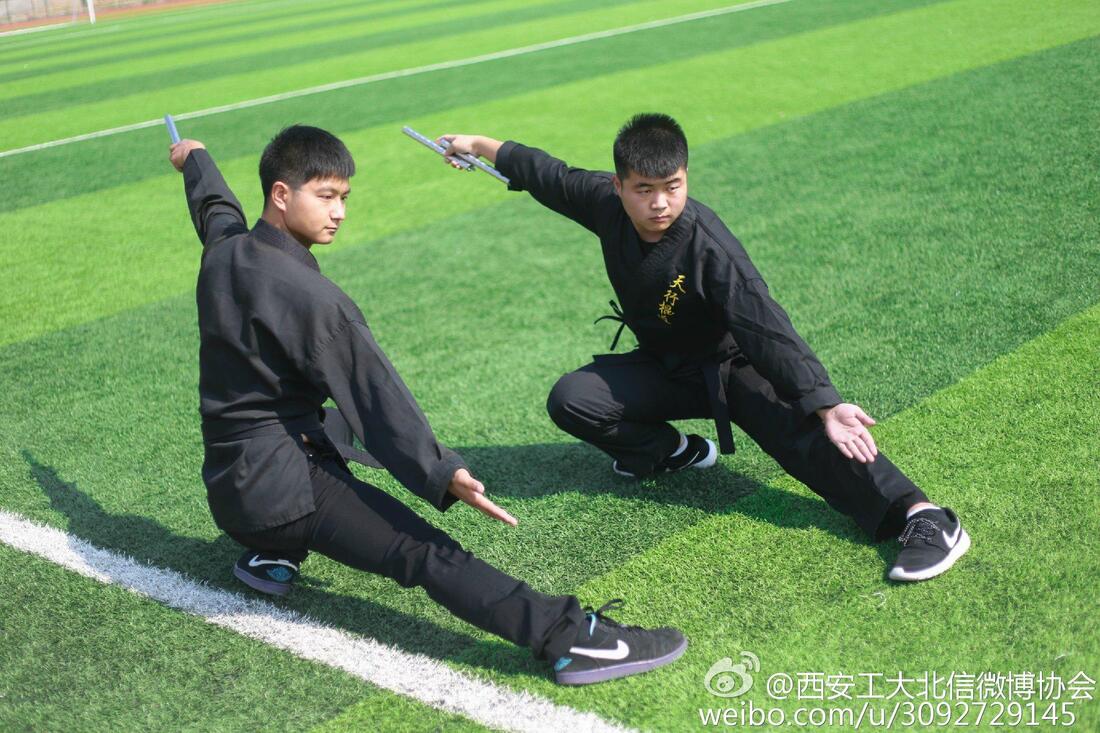
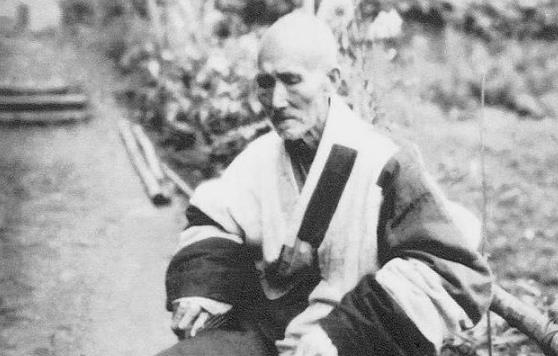
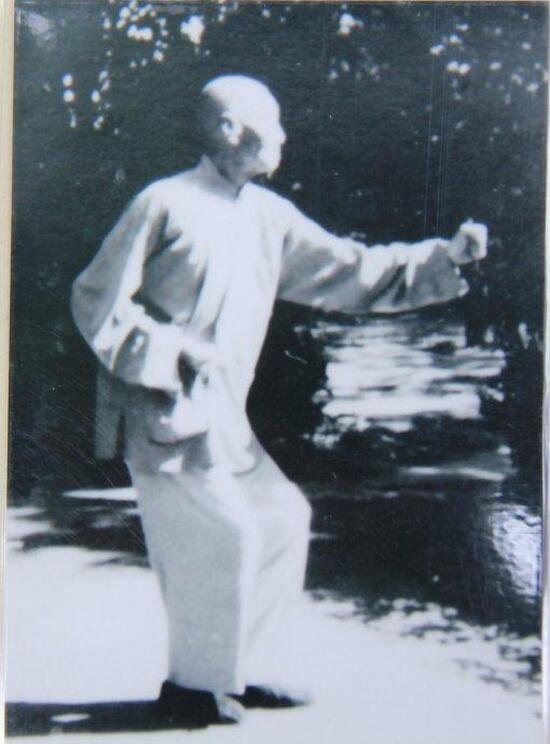
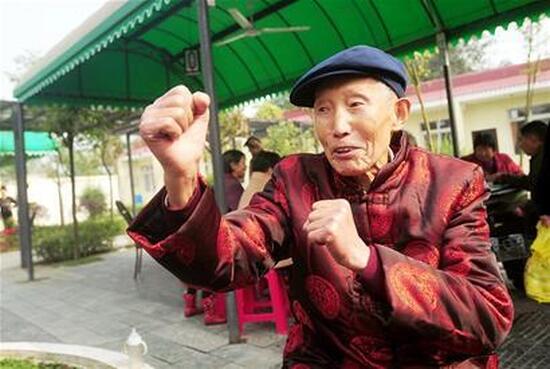
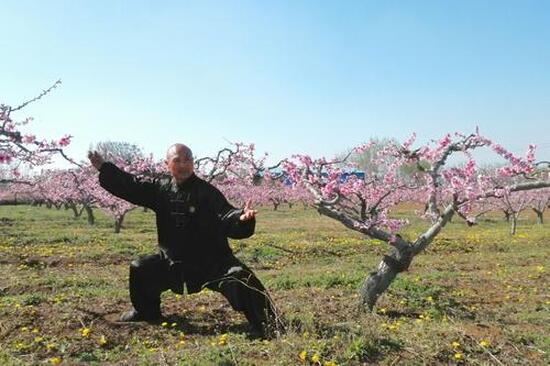
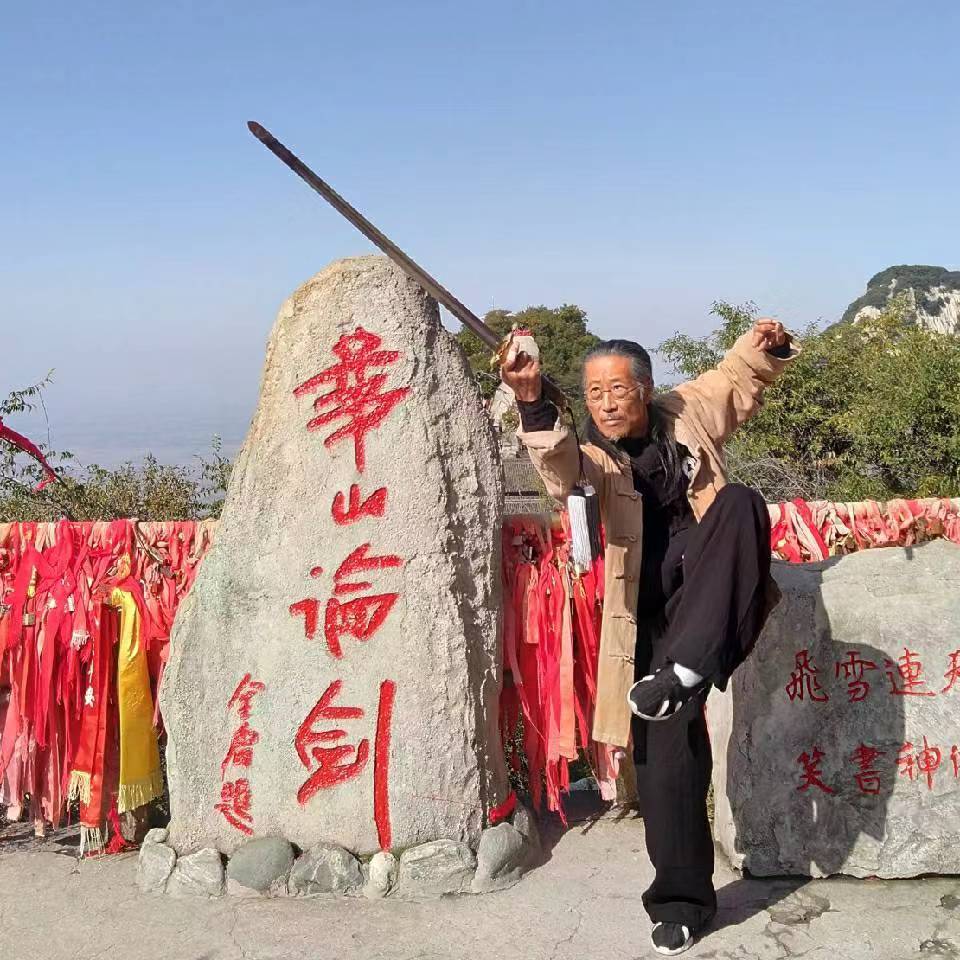
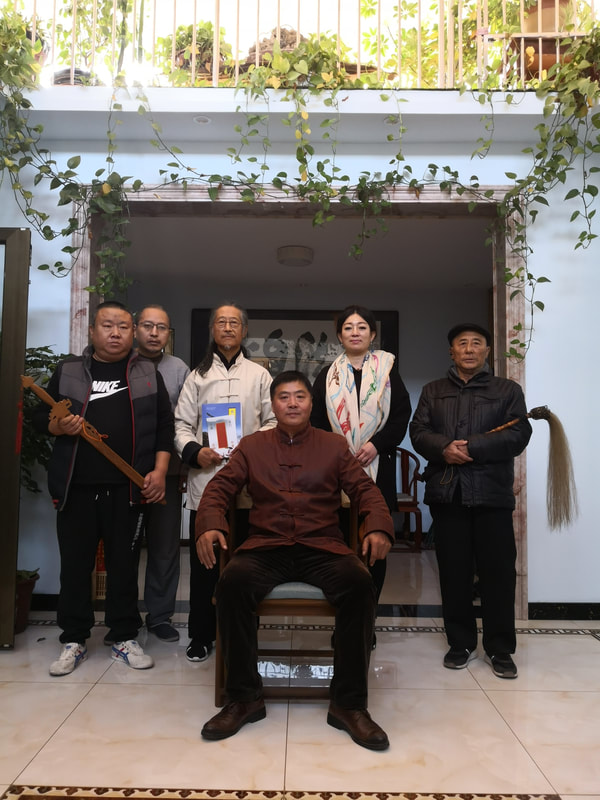
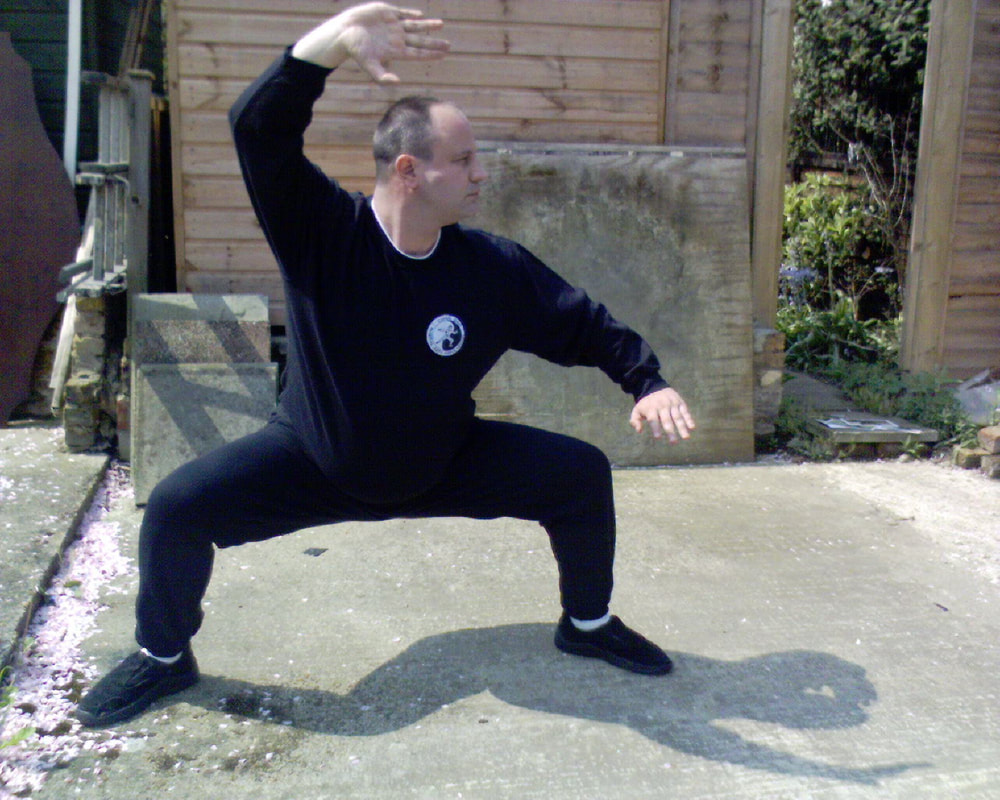
 RSS Feed
RSS Feed